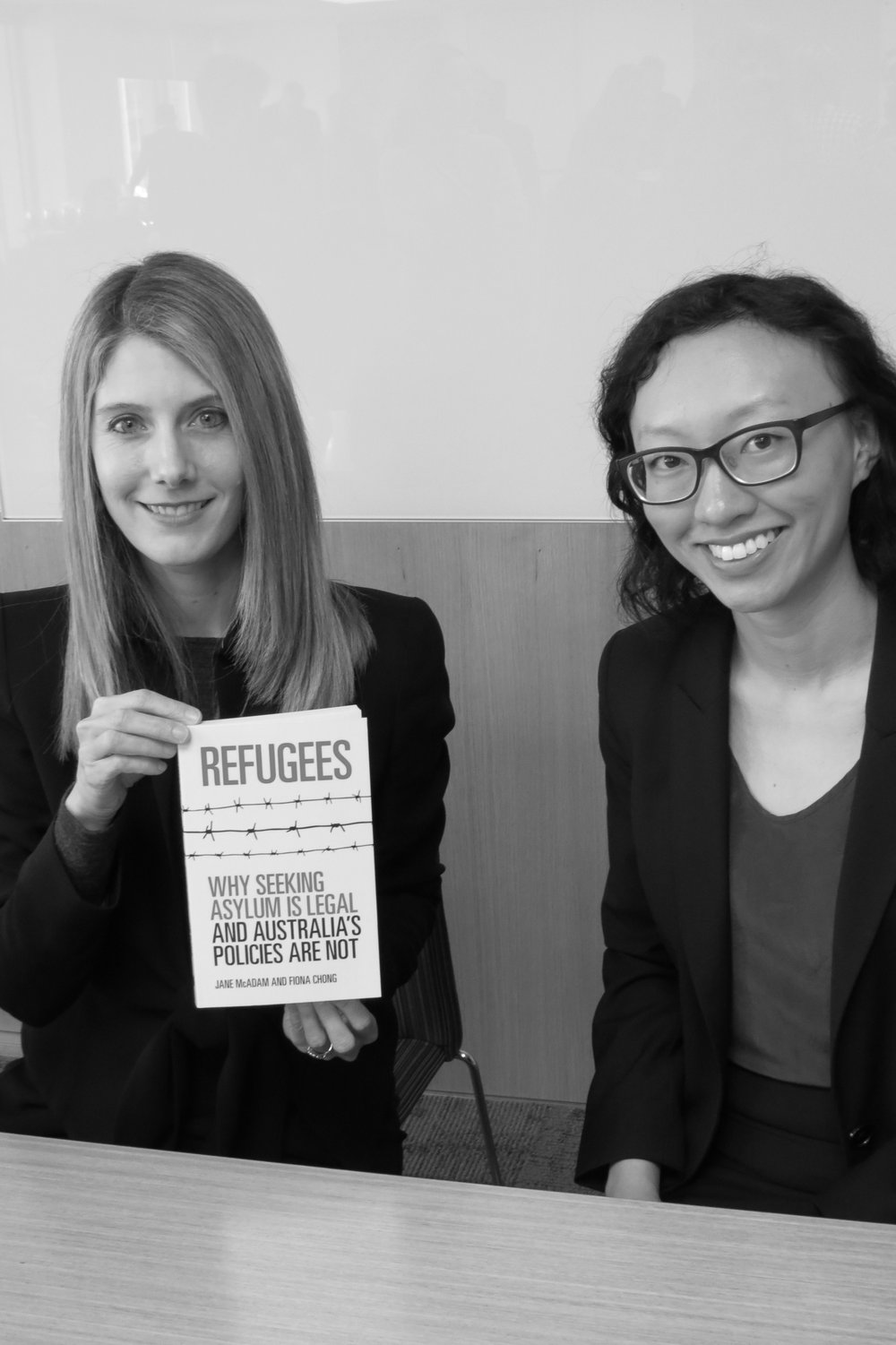Jane McAdam and Fiona Chong reject spin and panic to provide a straightforward and balanced account of Australia's asylum policies in light of international law.
Recently, during a quiet evening domestic flight, I was typing away on my laptop when the flight attendant asked what I was doing. I told her that I was writing a book about refugees and asylum seekers. ‘That’s so interesting!’ she exclaimed, clearly sympathetic to the concept. ‘Are you writing about the legal ones or the illegal ones?’
That exchange encapsulates one of the key reasons why we decided to write this book. Certain problematic notions about refugees and asylum seekers appear to have taken root in the Australian community. These have led a growing number of ordinary Australians – decent, kind and well-meaning people – to support tough ‘border protection’ measures, ostensibly designed to ‘stop the boats’ and ‘save lives at sea’.
If you listen to our politicians or much of the media, you might well believe that asylum seekers are ‘illegal’. You might think that asylum seekers pose a potential threat to our national security, and that the government is right to keep them from our shores. The fact that Australia has implemented a policy of mandatory detention since the early 1990s only heightens public concerns that asylum seekers are dangerous criminals who must be locked away. You might also think that asylum seekers should wait their turn until a resettlement place becomes available, so that they can enter ‘the right way’. Or you might take a humanitarian stance, believing that drastic immigration policies, although potentially harsh in effect, are necessary to deter asylum seekers from endangering their lives by taking risky boat journeys to Australia.
However logical these conclusions might seem, the problem is that they are based on flawed understandings. Successive governments (aided by much of the media) have exploited public anxieties about border security to create a rhetorical – and, ultimately, legislative – divide between the rights of so-called ‘genuine’ refugees, resettled in Australia from camps and settlements abroad, and those arriving spontaneously in Australia by boat. They have done little to address the widespread misunderstandings in the Australian community about why people seek asylum, or to explain what the differences are between asylum seekers, refugees and migrants.
As in many other countries, asylum seekers in Australia are an easy target for anxieties ranging from national security to unemployment and demographic composition. They cannot vote, so their voices are marginalised in political debate. In Australia’s case, the divide between ‘them’ and ‘us’ has been deliberately reinforced by moving asylum seekers outside the Australian community into immigration detention centres, many of which are in remote locations, including in the Pacific island countries of Nauru and Papua New Guinea.
Apart from the tyranny of distance, other obstacles also prevent us from getting to know asylum seekers and see how they are treated. Immigration detention centre staff are required to sign confidentiality agreements, preventing them from speaking about what goes on within detention centres.
The government commonly justifies its own silence about the treatment of asylum seekers by citing ‘operational reasons’, likening this to non-disclosure of information to an enemy during wartime.
From the comfort of our lives here in Australia, most of us cannot imagine how intolerable the circumstances must be when risking one’s life on a dangerous sea voyage becomes a rational decision. If you are in a burning building and know that if you stay put you will die, but that if you jump you might just survive, then most of us would jump. It is not a choice you would make in other circumstances but, at that moment, it may be a logical one.
The fact is that Immigration Department figures show that the vast majority of asylum seekers who come by boat to Australia are refugees. Yet, because they come without a visa, successive governments have subjected them to very restrictive policies, including mandatory detention, diminished rights to family reunion, curtailed rights of review, offshore processing, temporary forms of protection and threats that they will never be resettled in Australia.
Until very recently, Australia received many more asylum seekers by plane than by boat. Those arriving by plane were not subject to the same restrictions and could live and work in the community while their refugee claim was being determined, rather than being held in closed detention. The distinguishing criterion was that on arrival in Australia they had a visa of some kind, such as a student visa or a tourist visa. It was on this basis that successive governments created distinctions between the rights of the two groups, conferring fewer rights on those arriving by boat. And yet, statistically, those arriving by boat were far more likely to be found to be refugees than those arriving by plane.
Misinformation has enabled the construction of elaborate policies designed to keep out people who are in need of our protection. Many of these policies violate Australia’s obligations under international law. Such an approach is particularly incongruous in a country like Australia, which is one of the most multicultural in the world, with a strong history of immigration and an otherwise striking level of tolerance for diversity and respect for human rights.
This is an extract from the Introduction to Refugees: Why seeking asylum is legal and Australia's policies are not by Jane McAdam and Fiona Chong, out now from UNSW Press.


